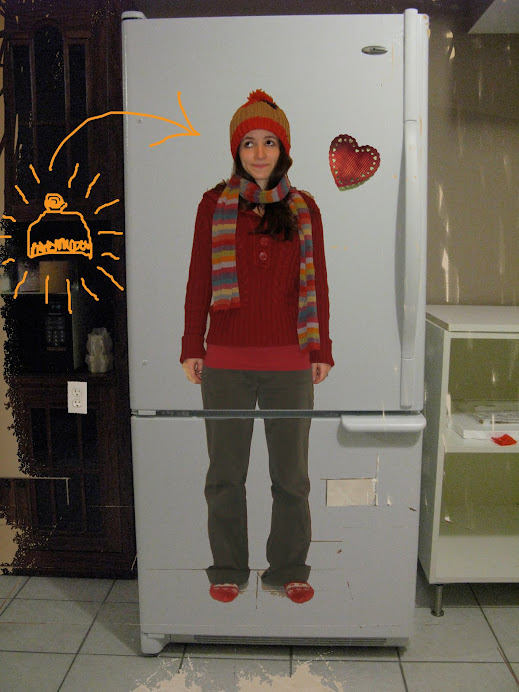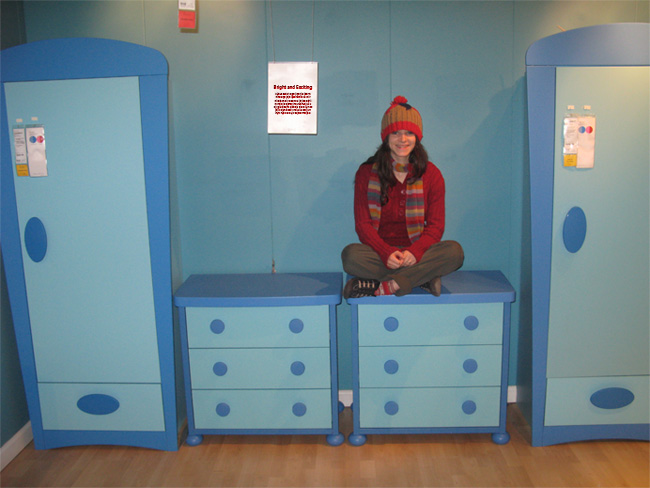Tuesday, March 30, 2010
Second Statement
Defining ‘identity’ is nearly as implausible as defining, with universal satisfaction, the arguably intangible force we name ‘art.’ In his essay, Oksana Psaiko reaffirms this elusively in making art’s meaning absolute, calling it “famously impossible,” but does, and I believe rightly so, make certain claims as to what art is not. Art is not, for example, restricted a collection of paintings or documented artifacts, an elite practice, inaccessible to the masses, or a product of society. Without art - which is philosophy, fantasy, the world of the in-concrete (if you will), the fabric of being that gives all things a greater significance than the ‘dominate’ senses would recognize - life is void; insubstantial; dead.
What Psaiko was talking about is something that everybody is a participant of in some way or another, something inseparable from our lives. This interplay between the unseen and the seen world, between art and life, is exactly what is happening when we attempt to create ourselves through the construction of an identity. We have preferences, tendencies, and tastes which provoke us to surround ourselves with associations that reinforce those inclinations; this is the interplay. Because identity is intangible and unseen, one oft feels compelled to create the image around it, like paper mâché over an invisible mass. We do it through the friends we keep, the clothing we wear, the movies we collect, our haircuts, our tattoos, our diets, our political affiliations (or lack of political affiliation), our sports teams, mannerisms, and language, our heros and our work.
I’d like to call it a conscious practice, but I can’t be convinced that it always is, or even normally is. Can art be an unconscious, or even a subconscious doing though? Perhaps. I would doubt that it is always examined in a self, in myself for example, to the extent that it becomes a consistent, evaluated process; neat, calculated brush strokes. Somehow, nonetheless, whether a person has actively asked themselves the age~old “who am I, really?” or is merely picking up a coach purse at the mall for the fiftieth time, something careful, and dare-I-say considered is taking place that cannot be denied as sacred, in it’s own way.
My latest installment to the blog was a song, lyrically pertaining to a mannequin with a bird inside his chest, his “blackbird heart,” or otherwise, his identity. What I’m representing is the living, vibrant word of art materialized in counterpoint with the concrete, tangible, physicality of the ‘real’ world that we seem to inhabit much more discerningly. An identity as something that is alive within, something that is not restricted to our ‘mannequin’ bodies was something that I wanted to explore. I do believe that our physical selves and our relationships with the body contribute to what an identity becomes for an individual, but I also believe that unlike the body, this is a thing that can transcend space, time, and even ‘reality’ itself. I would proposition that Captain Nemo of the Nautlus, Wendy Darling, Edmund Du Chaillu, Emma Bovary, Dorothy Gale, James Bond, Sherlock Holmes, and Anne Shirley all have genuine ‘identities’ which inhabit a space in our universe as well; identities that we ourselves may have borrowed from at one time or another - how can one say that they do not exist then? And what about Mother Teresa, Elvis, Mohandas Ghandi, Tchaikovsky and Amelia Earhart? The people are gone, their bodies turned into compost (and I don’t mean to seem irreverent, this is suprisingly enough the reverse), but as a stand-in for all, Amelia Earhart is not dead. The identity which we, the voyeurs of history, have implied upon her, has not left our world. What we know about her based on the external associations largely which she created inform us, and have made her immortal. Therefore identity does not belong to the body, to the tangible - the bird doesn’t need the mannequin, and indeed can exist more freely outside, as part of something bigger than I had considered at the beginning of this project, before reading Psaiko.
Psaiko proposes that art is not, and never can be, secondary to society, society is born of art. But like all things ‘born’ and tottering on their foreign feet, society is flawed- it’s damaged and it makes messes. We have come to make certain assumptions in our cultures, such as the value of a person based on their gender or race or occupation (which usually also implies economic standing). Is this ‘art’ also? I don’t feel quite entitled to answer that, but I will make a comparison - It’s like bucket of paint being tossed over the framed works in Paris’ Louvre; this is an easy, blanket way to make create uniformity and to remove the care, the passion, and the meaning given the pieces by their creators. Like the painters who filled that museum with murals, individuals do tend to put a great deal of care into their work, the work of becoming who they are. To cover that over with beliefs and assumptions that lessen and misrepresent, buckets of paint thrown over the landscapes, that could be art, but definitely the ‘dark side’ of the art-force.
The dress project was an amazing experience because of this though - it felt like stripping away all of those layers that a society might splotch over the identity of a racialized man working the cash at a burger joint. First of all, it revealed him a name - Akain - and that is always more dignifying. It revealed a kindly temperament, an imaginative mind, an ambitious strength, and a rich, complex personality - it revealed much more of him than the careless hand of our socially constructed assumptions would ever otherwise allow.
And even here I have made my depiction too compartmentalized to give an accurate, fluid image of a person. This brings back me to my second project, Rearrangement. If I were to meet Akin again in 15, 20, 29 years, would he be the same Akain? In some ways yes and in other ways no. Identity has what I like to coin a ‘loyal fluidity;’ it changes and reshapes itself over and over agin, but in certain places, does so very slowly if at all, as though imprinted with a ‘loyalty’ to a particular state of being that, some may say, is purely innate. Everything is challengeable, but for now I am contented to say that some things will change less so than others. Throughout the video, despite the costume switches and such, there always seems to be a sense of congruity with ‘who I am,’ almost as if these changes are frivolous compared to something more drastic, perhaps. These Changes are comparable to buying a new goldfish, or a motorcycle, or redecorating with the latest and greatest and Swedishistist Ikea stuff - not going from introvert to extrovert, from red to green.
The pictures were a great way to start off my adventuring into such an involved theme. The Ikea picture, I think, captures a lot of what I was trying to say about attaching oneself to ‘this’ and ‘that’ in order to create ‘thou.’
In a similar way to the mannequin with his blackbird heart, the ‘soul’ in the refrigerator was a way of representing the in-concreteness of identity and the need to make it tangible in order to make it seem more ‘real.’ What I think is neglected in this thinking, however, is the idea that the power, the real art of identity, is rooted in that in-concreteness. Relentlessly we are bombarded with dominant ideals and images of what we should be; the ideal woman, the hegemonic man, the the emotional, the unemotional, the gendered, the racialized, the marginalized, the powerless. But whatever we are told to be, or reduced to in the social construct, we can be something bigger if want to be, outside of everything. I won’t say that the artful identity is untouchable, per se, but it can take a hit if it has to, doesn’t mind being challenged by the frivolities of the concrete world; so fire away.
With this I will leave you - adieu! adieu! ‘Till next time, bright souls.
Sunday, March 28, 2010
curiouser and CURIOUSER
 This here is a newsprint style photo of the books dress. I tried to make it look like a newspaper print image for the sake of self-reflexivity, and because it made an otherwise unclear picture a little bit more distinct. I like how suddenly there appears to be a smallish clock at 2:58 1/2 where there certainly was not one before.
This here is a newsprint style photo of the books dress. I tried to make it look like a newspaper print image for the sake of self-reflexivity, and because it made an otherwise unclear picture a little bit more distinct. I like how suddenly there appears to be a smallish clock at 2:58 1/2 where there certainly was not one before.





